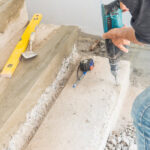A healthy living environment is essential for our well-being, but there are hidden threats that we often overlook. One such threat is radon, a colorless and odorless gas that can pose serious health risks. Radon is a naturally occurring gas that seeps into homes and buildings from the surrounding soil, water, and rock.
In this article, we will explore the importance of ensuring a healthy living environment by understanding radon and taking necessary measures to mitigate its presence.
Understanding Radon
Radon is a radioactive gas that forms naturally in the ground. It can enter homes through cracks in the foundation, gaps around pipes, or other openings. Knowing the sources and characteristics of radon is crucial to comprehending its potential risks. The amount of radon in the air is measured in picocuries per liter (pCi/L). The EPA recommends that homeowners take action to reduce radon levels if readings are above 4 pCi/L.
Health Effects of Radon
Prolonged exposure to radon can have detrimental effects on our health. Radon gas decays into radioactive particles that, when inhaled, can damage lung tissue and increase the risk of lung cancer. The World Health Organization has estimated that radon gas is responsible for up to 15% of all lung cancer deaths worldwide. Other health effects from exposure to radon gas include respiratory symptoms, headaches, dizziness, and fatigue.
Aside from its health effects, radon gas can also cause structural damage to our homes. The presence of high radon levels in enclosed spaces can lead to corrosion and decay over time. This can cause damage to walls, ceilings, and foundations.
Radon Testing
Detecting radon levels in our homes is the first step toward ensuring a healthy living environment. A variety of testing methods are available to measure radon levels. Homeowners can use a short-term test kit to get a general idea of the radon levels in their home or an annual long-term test for more accurate results. Professional radon testing services in Boulder are also available.
Preventing Radon Entry
Radon can find its way into our homes through various entry points. Identifying and sealing these entry points with proper caulking and sealants can significantly reduce radon levels. You should also ensure that your home has an adequate supply of fresh air by opening windows and using fans.
Radon Mitigation Techniques
For homes with high radon levels, mitigation techniques are essential to reduce the concentration of radon gas. These techniques involve the installation of a radon mitigation system that uses fans to draw radon gas out from underneath the home and vent it outside.
For example, in a sub-slab depressurization system, a fan is used to create negative pressure beneath the concrete slab. This pulls radon gas from the soil and vents it out of the home before it can enter.
Other mitigation techniques may include sealing cracks in the foundation, covering exposed dirt surfaces with plastic sheeting, and installing a specialized drain tile system.
Radon Awareness and Advocacy
Creating awareness about radon is crucial in ensuring a healthy living environment. You can do your part by educating yourself and others about the health risks of radon exposure. You can also join an advocacy group to help promote awareness and encourage radon testing in your community.
Additionally, you can contact your state’s health department to learn more about radon testing and mitigation. This will help ensure everyone in your community lives in a healthy, safe environment.
Conclusion
Ensuring a healthy living environment involves addressing the hidden threat of radon. By understanding the sources, health risks, and mitigation techniques, we can proactively reduce radon levels in our homes. Testing for radon, preventing its entry, and hiring professionals when necessary are essential steps toward creating a healthier living environment. Let’s stay informed, take action, and protect ourselves and our loved ones from the hidden threat of radon.







